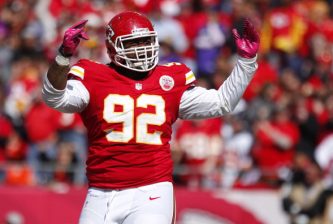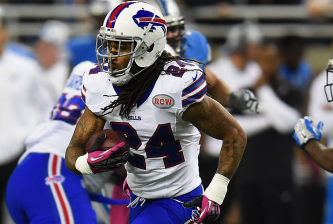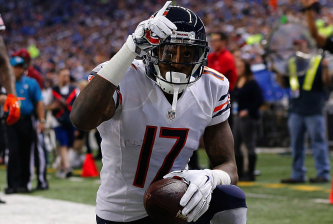When healthy Wes Welker may be slowing with age a bit, and he may not quite be the same threat he was a few years ago in his prime. He has a long cliff to fall from, though, as over the past seven seasons he’s caught 753 passes, 53 more than any other receiver.
Even with his decline, the loss of Welker for a quarter of the season following his suspension after he violated the league’s performance-enhancing drug policy would be near crippling for most teams. But the Denver Broncos aren’t most teams.
Welker is uniquely talented at a unique position. There are few receivers who can match his elusiveness and precise route running from the slot, a list that’s pretty much limited to just Victor Cruz. His ability to always find green grass and then turn it into even more after the catch led to an average of 112 catches per season over his six years in New England.
In Denver, the weapons to compensate for Welker’s absence are both plentiful, and versatile.
Going back to his time in Indianapolis, the slot receiver has always been a focal point for any offense that calls Peyton Manning its quarterback. In 2004, Brandon Stokley caught 68 balls for 1,077 yards and 10 touchdowns. Throughout the rest of his 15-year career he didn’t eclipse 700 yards or five touchdowns in any other season. But can Manning take any slot lemons and turn them into delicious lemonade?
He did that last year when Welker missed time due to a concussion. The Broncos’ regular slot receiver sat out the final three games of the regular season, and the passing offense declined only marginally, averaging 336 passing yards per game after moving along at a pace of 341.2 throughout the rest of the season. Meh, and they also scored 30.3 points per game.
Filling in for Welker was Andre Caldwell. He had only 200 receiving yards on the season, but 113 of that came over his three-game stretch as the next man up. He provided sufficient depth while also scoring two of his nine career touchdowns.
Caldwell is expected to step into the slot again now, though impressive rookie Cody Latimer may also play a role and take away some of his snaps. But the real offensive reinforcement with Welker removed comes from the widespread ball distribution. Without him in the offense last year at least seven different receivers caught a pass in all three games, peaking with nine in Week 17.
Manning always has the option to look at multiple targets who can churn up yardage after the catch. Though they’re classified as playing different positions, Demaryius Thomas and Julius Thomas are nearly the same player. They’re both large-framed pass catchers with incredible body control, and speed to breakaway downfield. Basically, they’re much larger Welkers.
In that same three-game period, Demaryius and Julius combined for 444 receiving yards, an average of 148 per game split between two core weapons. Welker was missed, sure, but Caldwell did enough to satisfy Manning’s slot leanings, while Thomas squared did the rest.
Eric Decker played his part too, and he’s since been replaced by Emmanuel Sanders, who will now shoulder a larger share of the workload too and burn secondaries deep. In Week 3 of the preseason, the only August game that sort of matters, Sanders finished with 128 yards on five catches, most of which came on a 68-yard touchdown.
The Broncos have some horrible matchups over their first four games, highlighted by Sunday afternoons against the menacing Seattle and Arizona secondaries. But regardless of the opponent, there’s more than enough depth to overcome Welker’s absence.




